- Undergraduate
Bachelor's Degrees
Bachelor of ArtsBachelor of EngineeringDual-Degree ProgramUndergraduate AdmissionsUndergraduate Experience
- Graduate
Graduate Experience
- Research
- Entrepreneurship
- Community
- About
-
Search
All Thayer News

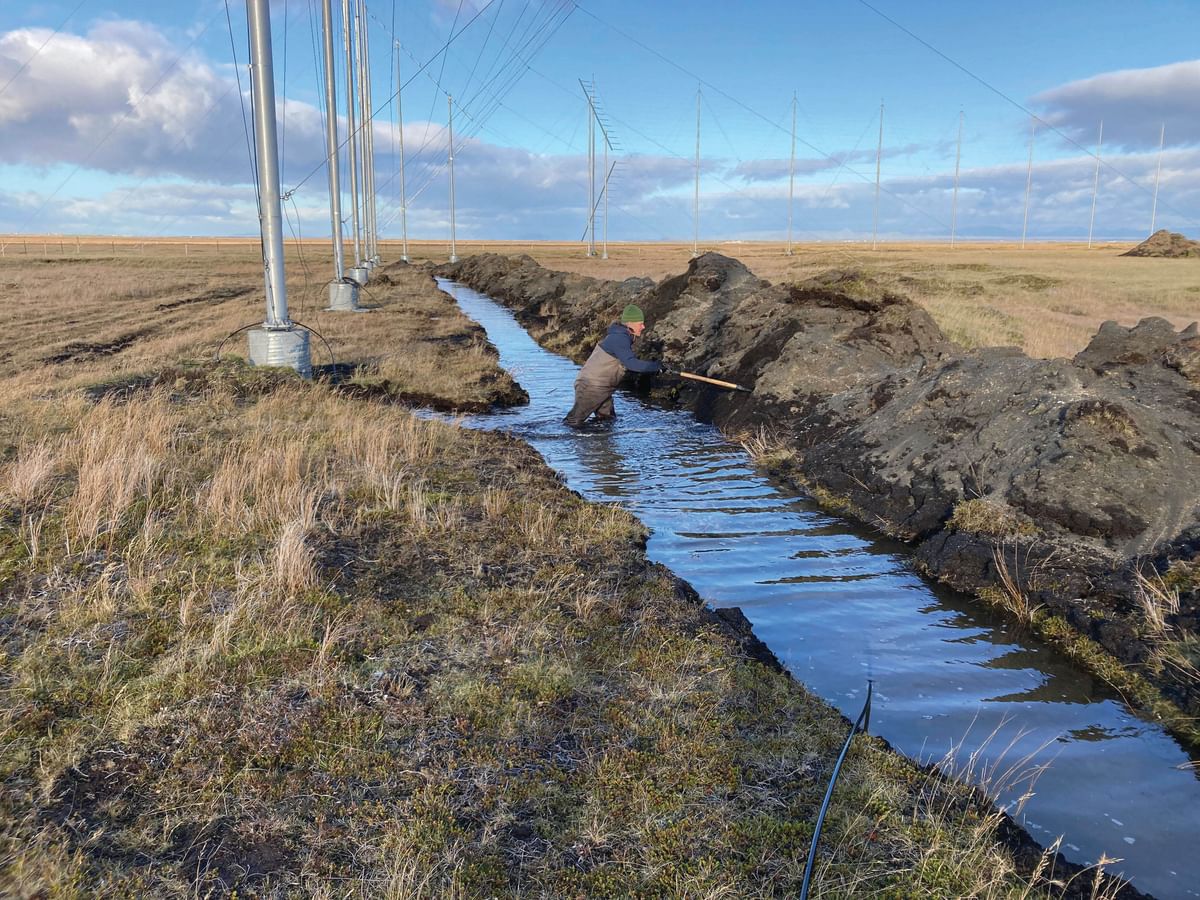
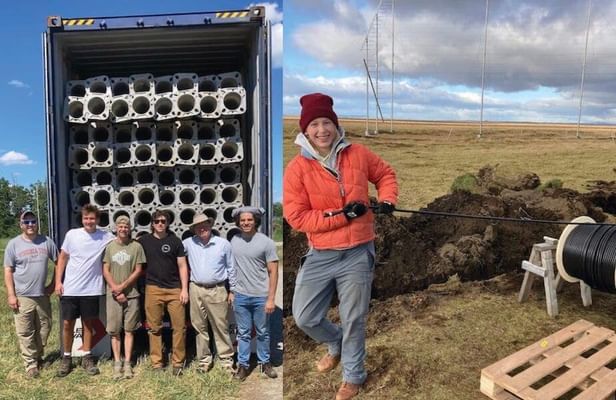
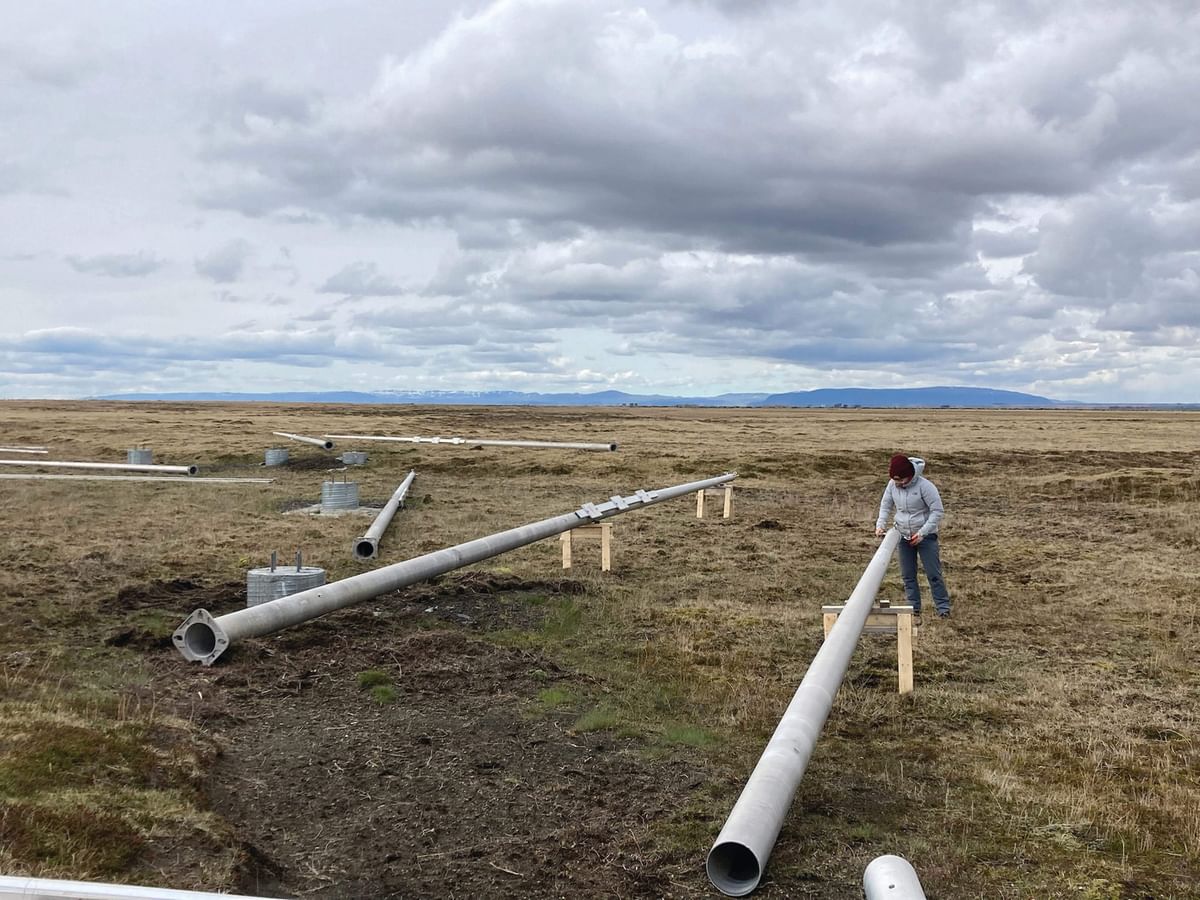
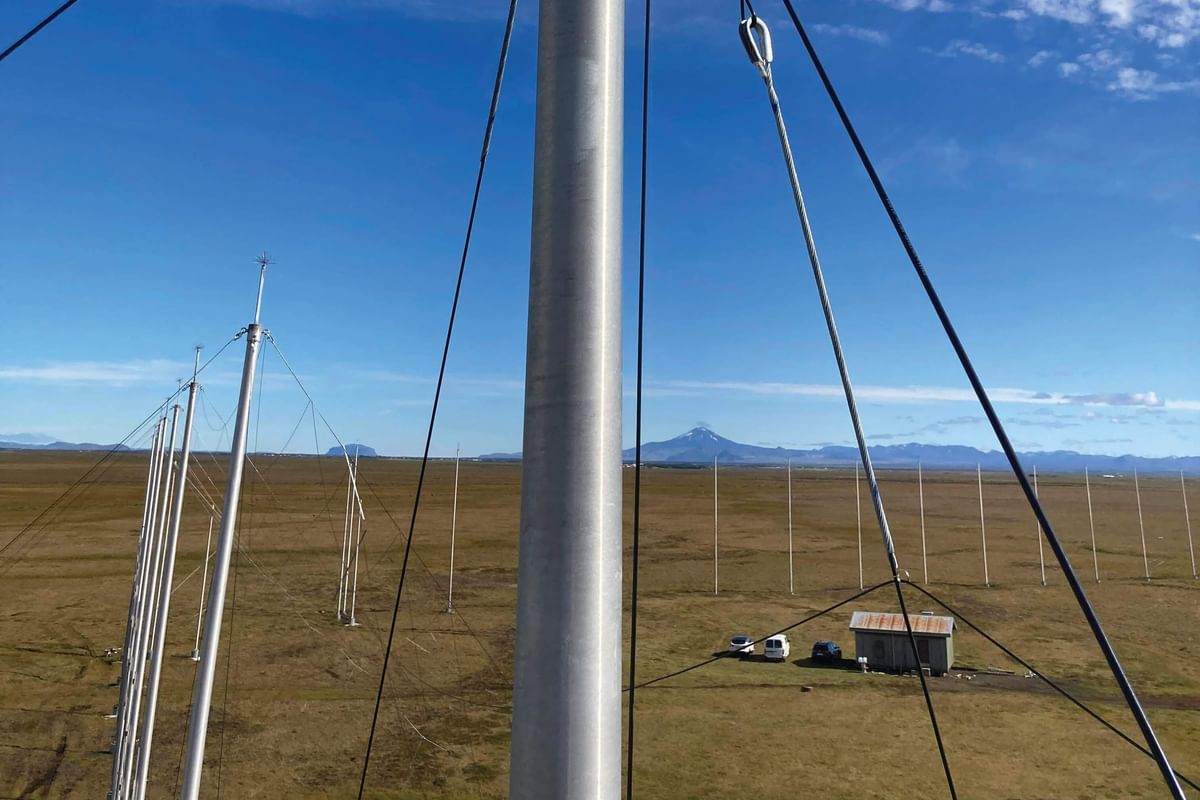
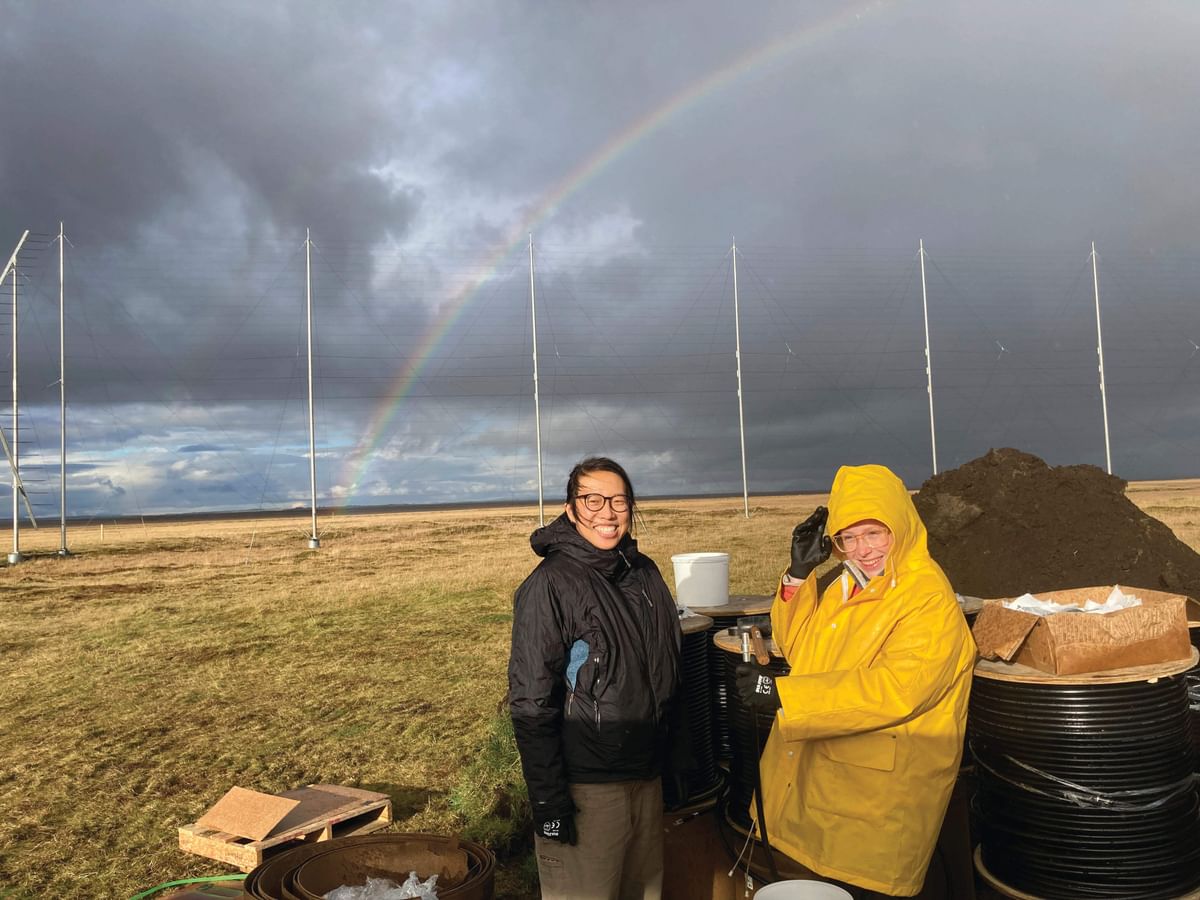
SuperDARN in Iceland
Jan 27, 2023 | Dartmouth Engineer
Dartmouth Engineering Professor Simon Shepherd is leading a team of scientists and students to build the latest addition to the international Super Dual Auroral Radar Network (SuperDARN).

Research scientist Evan Thomas unfurls stabilizing cables on an antenna support pole as part of Professor Shepherd's SuperDARN build team. (Photo by Nat Alden '23)
Since June 2021, he has traveled to Pykkvibaer, Iceland, more than a dozen times to construct a pair of high-frequency radars to measure the motion of ionized gas in the ionosphere to study geomagnetic storms and other phenomena involving plasma in the near-Earth environment that impact important infrastructure and systems such as satellite communications and energy grids.
The new arrays are similar to those he helped build—in 2009 in Kansas, in 2010 in Oregon, and in 2012 in Alaska—as part of a National Science Foundation-funded project with Virginia Tech, the University of Alaska Fairbanks, and the Johns Hopkins Applied Physics Laboratory. Shepherd's team completed most outdoor work in October, and he was setting up the electronics to collect data in late Fall.

Professor Shepherd dons hip waders in late September to dig trenches to lay down coaxial cable to connect each antenna to the electronics "hut." (Photo by Michelle Wang)

(l) Shepherd (in green shirt) with Virginia Tech students and colleagues. (r) MS student Chloe Baker '20 Th'21 unspools some of the more than 5 miles of coaxial cable along a trench. (Photo by Michelle Wang)
"When we arrived, the site was under 6 inches of water in many places," he says. "When we began digging, the trenches immediately filled with icy water. I spent several days up to my waist holding cables down while my local crew used tractors to push dirt back in the trenches to bury the cables."
Shepherd and Virginia Tech students and colleagues successfully packed equipment into shipping containers bound for Iceland in June 2021. Shepherd designed the racks to stack and secure the equipment in place. The crew was very surprised—and pleased—when everything fit into two containers.

Baker (pictured)—in May with Shepherd and physics major Nat Alden '23—assembles 64 aluminum antenna poles and associated hardware that will form the antenna arrays. "After several more trips to mount and align the poles, measure and lay about 5 miles of coaxial cable, and configure the electronics and calibrate the system, we hope the radars will be operational," says Shepherd. (Photo by Simon Shepherd)

With the help of a local crew during a solo trip in August, Shepherd was able to align and tension poles and begin hanging antenna wires. (Photo by Simon Shepherd)

Hurricane-force winds hamper the efforts of MS students Michelle Wang '21 Th'22 (left) and Baker during build trip No. 8 in late September. Despite the weather, "we did manage to get more than 5 miles of coaxial cable in the ground, covered, measured, and cut to length," says Shepherd. (Photo by Simon Shepherd)
For contacts and other media information visit our Media Resources page.
